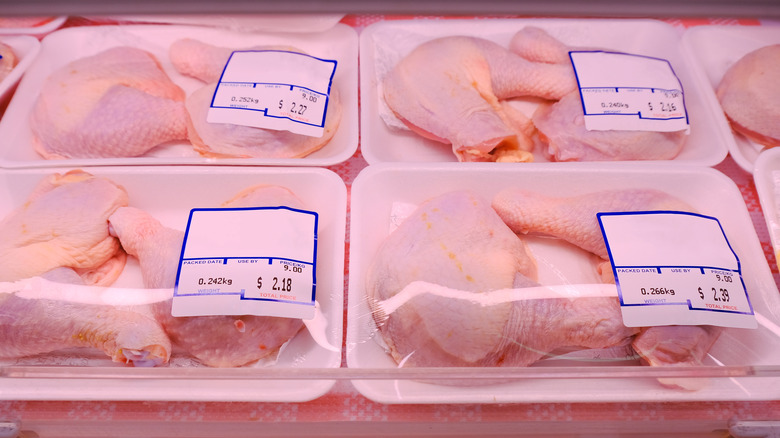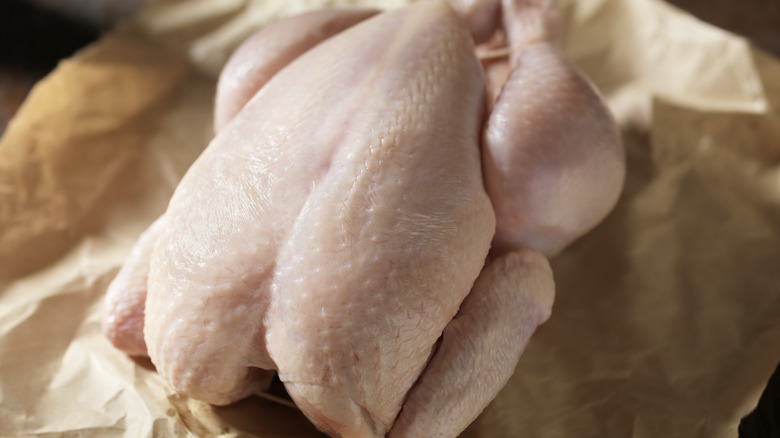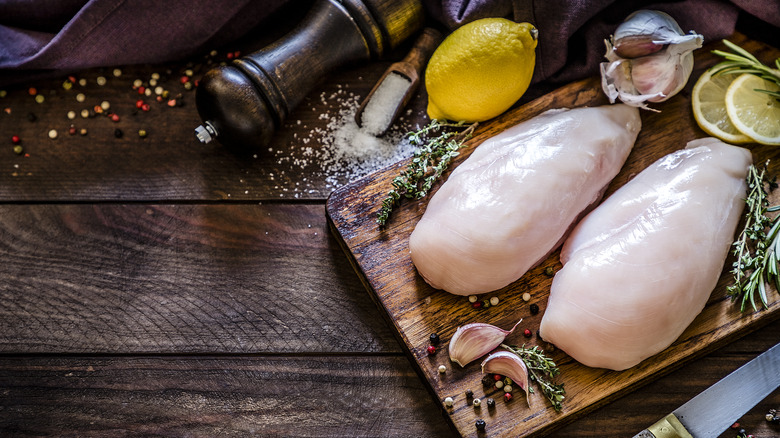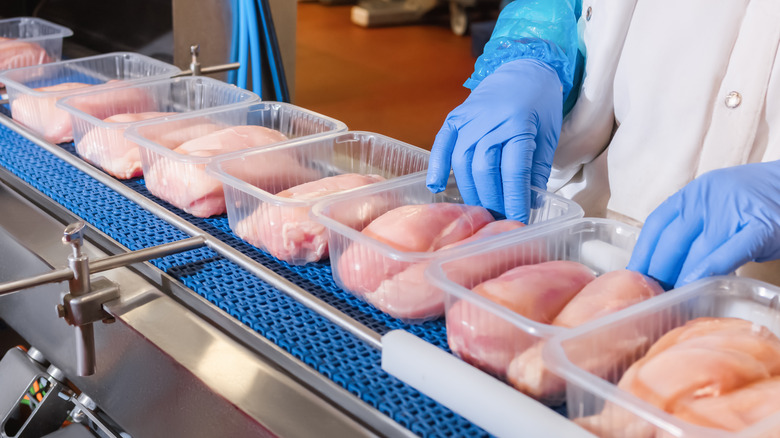How Can You Tell If Chicken Has Gone Bad?
There's nothing more frustrating than having spent the time and money getting a nice haul of chicken only to realize you bought it too soon and now it's gone bad. If you're looking into your fridge and staring at that family-size package of chicken breasts wondering if you're about to give your entire family food poisoning, don't worry we're here to help you figure out if your chicken is still okay to eat.
If after examining your chicken, you think it may just be a little spoiled but not completely spoiled, know that you are risking a serious run-in with salmonella. As anyone who's experienced it can tell you, it's not worth it. Extreme diarrhea, vomiting, and abdominal pain await you if you're wrong.
Chicken, in particular, is notorious for pathogens. When testing raw chicken at grocery stores for salmonella, nearly 20 percent test positive. That's a one in five chance that what you have in your fridge is a pathogenic petri dish. If you cook chicken to the right temperature before it's gone bad, it's no problem. The pathogens are killed, and it's safe to eat. But if the chicken has gone bad, even cooking the chicken properly won't save you, so don't risk it.
How long is chicken good for?
Like all poultry, chicken will last for one to two days in the refrigerator. Compared to most of the food we buy, that's no time at all. Make sure your chicken is stored in an airtight container. Not only will it keep your chicken from going bad as quickly, but you'll also prevent any juices from running onto other food in the fridge.
If you know you aren't going to cook your chicken within a day or two of purchasing it, you should freeze it. A whole chicken will last up to 12 months in the freezer. If you have pieces, like chicken breasts or thighs, they will last up to nine months. Beware of freezer burn. Your freezer will dry out your chicken faster than that nine-month mark if it's not stored properly, resulting in an extreme loss in quality. Freezer-burned chicken is nearly inedible. You can avoid freezer burn through proper storage.
Cooked chicken will last for three to four days in the refrigerator. If you can't use your chicken quickly enough but you don't want to freeze it, cooking it ahead of time is a good way to extend its shelf life. Keep it in an airtight container for best results.
Check the expiration date
Just because it's been less than two days since you purchased the chicken doesn't necessarily mean the chicken hasn't gone bad. If you suspect something is off, there are additional steps you should take to make sure you aren't about to cook rotten meat. Checking the expiration date on the packaging is one of the most straightforward ways to see if the chicken is still good. If you're past the expiration date, the mystery is solved. Your chicken has gone bad. There's nothing left to do but toss it.
If you're willing to risk it, make sure you are checking the meat itself for any signs of spoilage. We list several below. According to the USDA, product dating for poultry is done voluntarily and is not required by federal law. If the chicken exhibits no signs of spoilage, they say it can be eaten within two days of purchase. Just know that you are taking on extra risk by eating past its given expiration date.
Do a smell test
If you haven't marinated the chicken or applied any spices, give it a good whiff. Rotten chicken will give off a faint smell similar to ammonia. If you smell rotten eggs or something sulfuric, these are also signs the chicken has gone bad. This won't work if the chicken has already been seasoned.
Fresh chicken doesn't really have a smell. It should smell bland and inoffensive so if you find yourself grimacing or pulling your head away after a smell test, you can be pretty sure your chicken is past its prime. It's worth noting that cooked chicken that has gone bad will also give off a similar ammonia smell, so use this test for cooked chicken as well if you're unsure.
An interesting note about the smell test is it isn't a guarantee you won't get sick. The type of bacteria that produces the ammonia smell is a spoilage bacteria, not a pathogenic bacteria. Technically speaking, you could eat smelly chicken and be fine. Unfortunately, sometimes, the opposite can also be true; the chicken may not be warning you off with a foul smell, and you still end up glued to your toilet seat for days. The growth of spoilage bacteria doesn't necessarily mean pathogenic bacteria is present, but if one has grown, there's a chance the other has grown as well.
Feel the chicken
Fresh chicken is soft and glossy. Another sign that the chicken has gone bad is a change in texture. As chicken begins to spoil, it will become slimy or sticky. If you touch the chicken and there is any kind of residue left on your hand afterward, then the chicken has gone bad and should be tossed. Cooked chicken that has spoiled will also have a slimy texture to it.
Unfortunately, rinsing the chicken will not change anything. Common sense may say that if you wash away the slimy texture, you are washing away the harmful bacteria, but it doesn't work that way. In all likelihood, you would simply carry the bacteria to whatever the water touches resulting in a higher risk of cross-contamination. Thoroughly wash any surface that has come in contact with this water.
You also can't cut the slimy parts off. There are some types of food that are still edible even if other sections have molded over, like hard cheeses, but chicken isn't one of them. The slimy texture is a symptom of spoilage, but the bacteria will have contaminated the entire piece of meat already by the time it appears.
Examine its color and packaging
When looking for spoilage, check the color. Chicken will normally have a light pink color with pieces of white fat. Spoiled chicken will have a gray tint to it or even a gray-green. The white fat will also turn yellow. This is a sure sign of spoilage. You should also check for mold, which will have a gray-green color as well.
When you're looking at the packages of chicken at the grocery store, take notice of chicken that is sitting in its own juices. This is a sign of improper handling on the part of the grocery store. It doesn't necessarily mean that the chicken has gone bad, but it may spoil quicker than other packages. Likewise, if you're at home and you notice that your chicken is sitting in a puddle of its own juices, that's a sign the chicken isn't as fresh, and you should take a closer look for signs of spoilage.





